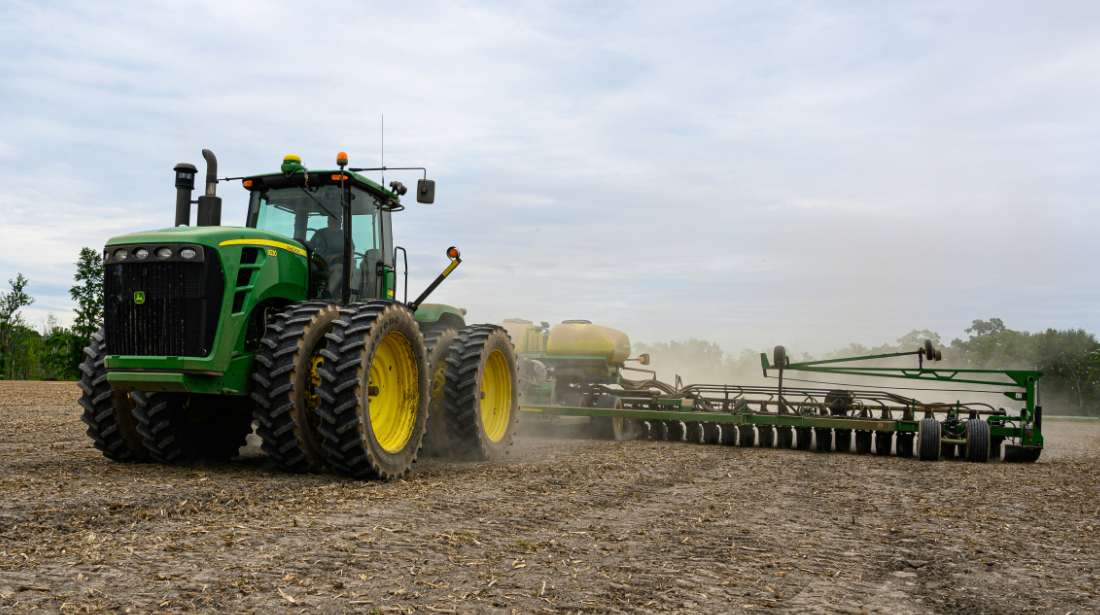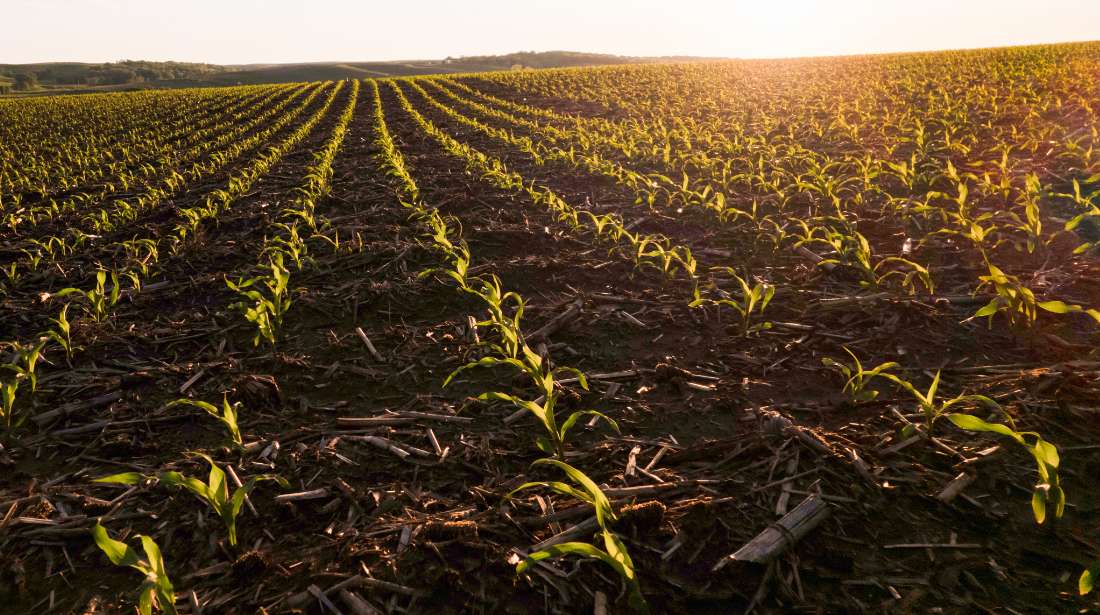According to the latest Crop Progress Report from USDA’s National Agricultural Statistics Service (NASS), corn and soybean planting are behind schedule. Approximately 49% of corn is in the ground compared to 60% at this time last year. Soybeans are 35% planted compared to 45% on May 12, 2023.

While the clock is ticking, there’s no need to panic. There’s still time to plant your current corn and soybean products before crop insurance deadlines. However, if rainfall in the upper Midwest persists, growers may need to look into alternatives such as replanting.
“Parts of the Midwest are getting much-needed rain, which helps the drought monitor. Unfortunately, that also means planting has been pushed back for many farmers, bringing up conversations on replanting.”
Tom Larson, Stine® Seed Company’s director of agronomy
Now, growers are left wondering as they wait. Will the planted seed germinate? If replanting is necessary, will they need to switch to different maturity products?

As director of agronomy, Larson has a lot of experience and guidance on this topic. Here are some of his top recommendations for growers pondering if replanting makes sense.
- Take the emotion out of the decision.
Growers shouldn’t act on a whim because they feel rushed or worried about the potential outcome. There’s still time to think through what makes the most sense.
“Look at it from an analytical standpoint,” says Larson. “See what you’re dealing with before making a decision. Do the research first. You only get one chance to do it right.”
- Start digging.
If you suspect something is off with what’s in the ground, start digging. Larson recommends taking random samples from the field at 1/1,000 of an acre. For example, if you’re in 30-inch rows, that’s a sample every 17.5 feet.
“There are a few things you need to look at when you pull samples, including planting population and seed spacing,” says Larson. “Compare the results with your goal from a population standpoint. If it seems off, get your hands dirty. Dig in that row to figure out what happened.”
Larson adds the ideal seedbed should have an equal distance between seeds to achieve the highest yield possible. If there are discrepancies with seed spacing, it’s important to get to the root cause of any issues before making hasty decisions. For example, consider inspecting planting equipment for mechanical issues. Compaction could be a factor if the seed was planted in cool, wet soil, so look for signs of poor seed-to-soil contact.
- Review plant stand and overall health.
When surveying an area of the field or soil sample, it’s best practice to look at the current plant stand and the plant’s overall health. Is the germinating seed waterlogged? Does the plant have noticeable frost damage?
“If it’s frost, you have to give it time to see how that plant responds,” notes Larson. “Corn can look ugly for a while, but it will come out of it because the growing point is below ground. Have patience and see if it will recover.”
If the seed is underwater, you might notice problems with germination, which could result in the need for replanting. Plant stands are also a critical piece of the decision-making process.
“For corn that has emerged, look at the evenness of stand,” says Larson. “Growers might have an acceptable population, but spacing might not be even. If you have a field with really uneven stands, replanting may be a definite consideration.”
Larson notes that if less than 25% of stands are affected, there shouldn’t be enough yield loss to necessitate replanting. If there’s a 30% stand loss or greater, growers may need to start having conversations with their local seed and agronomy experts.
“Replanting should take place three to four weeks after your initial planting date,” says Larson. “If you have less than 25% of your stand affected and you’re three weeks down the road from planting, don’t touch it. If you tear it up, there’s no guarantee it’s going to emerge. Sometimes, the best thing is to do nothing.”
- Don’t swap products on a whim.
If you’ve determined replanting is needed, don’t swap your hybrid or variety unless it’s absolutely necessary.
“If you have to swap products, stay as close as possible to your original maturity,” says Larson. “You don’t want to risk the crop not maturing in time before it can be harvested.”
Growers should also consider what switching a hybrid or variety this late in the season might mean for next year’s crop.
“If you replant and your herbicide program is delayed, that can affect your crop next year,” says Larson. “Delayed applications can lead to herbicide carryover, and if you’re heading into a crop rotation year, you must be mindful of how that chemistry will impact next year’s crop in that field.”
- Consider the additional expenses.
One thing growers need to ask when considering a replant is if the potential loss in yield compares to the additional costs. This includes extra diesel fuel to operate equipment, added hours, more wear and tear to machinery, maintenance issues, and labor.
“There are always risks with replanting, including added costs,” says Larson. “That’s why we recommend consulting with a local agronomist or university extension specialist before making that determination.”
Related Articles
-

Stine® to offer Syngenta’s Victrato® soybean seed treatment in 2026
December 2025 in Agronomy
-

Use Stine’s XP® seed treatments to prevent early injury to your crops
December 2025 in Agronomy
-

Understanding Stine’s enhanced oil profile soybeans
December 2025 in Agronomy
-

Soil sampling sets the stage for spring
November 2025 in Agronomy



